BURLINGTON, ON June 10, 2012 He launched and managed to gain some altitude and it looks like he will stay aloft.
Jeremy Freiburger told a close to full house in the Performing Arts Community Studio the fundamentals of the community engagement part of the Cultural Plan that he has been contracted to prepare for the city of Burlington.
Freiburger is well qualified to take on the task and brings both energy and innovation to the work he has to do.
He does have his hands full working with the city’s communications people – but then he’s not the only one struggling with that department.
Freiburger has arranged to meet with citizens in every ward and while the turnout has not been large – those that did show up were enthusiastic. The first event was in Kilbride – to the surprise of many – culture is usually seen as something that happens south of the 401.
The turnout was better in Kilbride than it was at the Senior’s Centre which is smack dab in the middle of Ward 2 where all the cultural mavens are thought to live. So much for that thought.
While Freiburger was talking to the audience in Kilbride about what he is setting out to do – a group playing baseball got rained out; Freiburger didn’t miss a beat – he invited them in to hear what they had to say about culture. This guy clearly knows how to innovate.
Freiburger asks those who show up to do three things for him. Put a small dot on a map showing where they spend their cultural time and then go to an identical map and put down dots showing where you spend their cultural money.
Then Freiburger asks people to go to a very large map of the city and put down stickers on the places they like to go in the city. Lowville Park, put a sticker there, Student Theatre, put another sticker there. Freiburger wants to map points of cultural significance.
Out of all this data collection will come a picture of where people spend their time, where they spend their money and what it is about places they go to that attracts them.
Freiburger will be collecting data at events in each ward, for almost the first time we have seen events take place well north of the QEW divide. It would have been nice to see something in the Alton and Orchard communities. The Sound of Music crowd will be invited to take part in this exercise. If you didn’t get to one of the community events – Sound of Music and the Children’s Festival are good opportunities to take part in the data gathering
The crowd at the Performing Arts Centre heard Edie Friel, the man who put the city of Glasgow on the cultural map and made cultural events the strongest part of the Glaswegian economy by using a model from Azerbaijan to catch people’s attention. Using an Azerbaijani model to get the attention of people in Glasgow – – that’s chutzpah!
Friel explained the role culture plays in the development of a city. “People”, he said “don’t go to France, they go to Paris. People don’t go to Italy; they go to Milan or Rome. People go to cities because those cities have created a brand for themselves, a reason to go to that city.”
“When you brand a city you highlight it’s history, its heritage and its culture”, he said. We will come back to those three – they are very relevant to Burlington.
Friel pointed out that “we human beings have a need for membership, we want to belong to something”. That something can be a model railroad club, a photography club, a drama group. People go to things they identify with. There are literally thousands of people in Ontario who want to do nothing more than walk the Bruce Trail.
Most people either know what they want to do with their time and their disposable income or know they are open to a new idea; a new experience. Friel talks of “destination marketing” and he explains that you have to develop the “supply chain”. What does all that mean?
If Burlington is going to attract visitors we have to give them a reason for coming to the city – and those reasons are what he refers to as the supply chain. “Develop the brand” says Friel – “not the artists. When you do that, then people will come and see all the artists.”
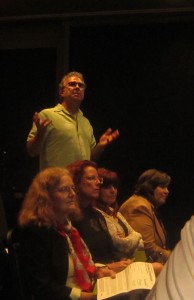
This artists wants to be a little higher up on the food chain - wants people to pay for the work artists do.
There was at least one artist in the audience who didn’t see it quite that way. While he had no problem being part of the supply chain he suggested that the artists could be a little higher up on that chain and complained about artists being asked to do their work for free by people who had good jobs running the cultural institutions in the city.
A near perfect example of just that happening is the two events held at the Burlington Art Centre on the weekend. The BAC had invited more than 100 artists to show their work and at the same time has the six Guilds that work out of the BAC showing their work. The crowds will not be coming to see a specific artist – they will be here looking at artisans and while here get a good look at what the BAC does day to day.
Just what is the Burlington brand? Is Freiburger expected to create a brand for the city? Nope – his job is to put together a plan to market Burlington and its culture – without really knowing what that culture is. THAT is a task and a half. Burlington is certainly festivals. Is it a gathering place for artists? Maybe not yet – but if the Burlington brand is fully developed and exploited the city will become known as the place that always has a festival of some kind going on. If you develop the brand, if you make Burlington a place where people know there are a lot of artists – they will come.
Niagara on the Lake has a very clear brand? Well yes and no. The Shaw Festival takes place there but the Shaw is not the Niagara on the Lake brand. Stratford on the other hand is Shakespeare.
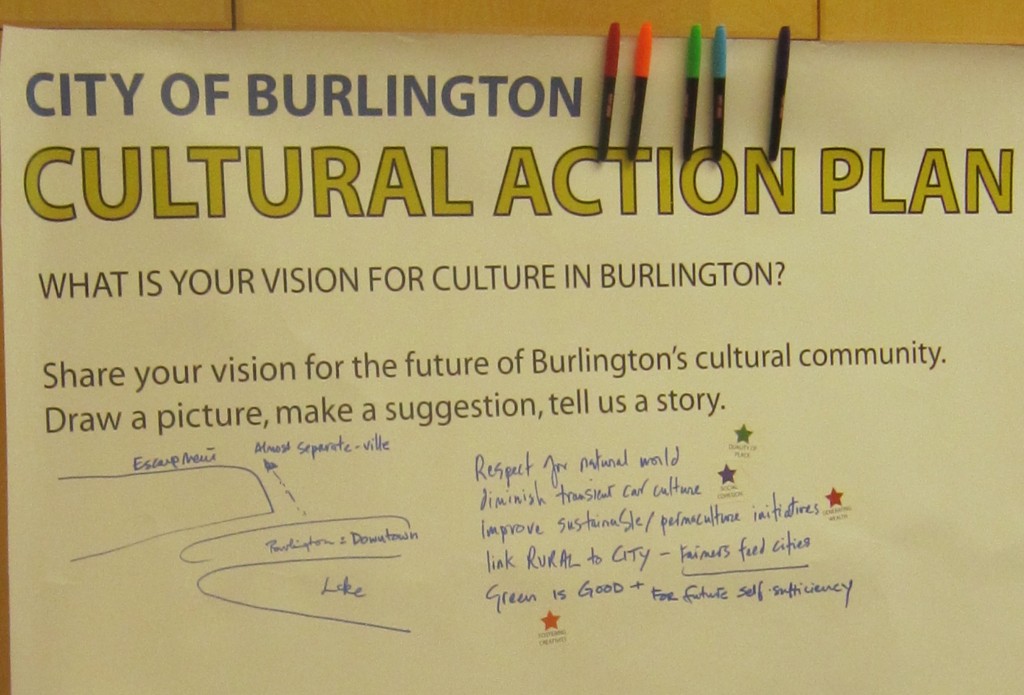
Besides mapping data participants in the Cultural Conversations were asked to contribute their thoughts and ideas.
The city has several events that are part of the brand – the Sound of Music Festival and RibFest – both of which need significant image upgrades. That’s not a criticism – it’s an observation. Burlington types are very edgy when it comes to making any kind of observation about how they are doing. The drama people understand the significant role criticism plays. Good critical comment helps an actor or actress improve their importance.
“A community” advised Friel, “has to believe in itself. You have to decide what the place is going to look like.” Now back to his comment about a community and its history, its heritage and its culture.
Burlington struggles with its history. There is a plaque in the western end of Spencer Smith Park that tells you the Brant Inn once stood there – but it doesn’t tell you very much about the Brant Inn and the very significant cultural events that took place there.
The Burlington Heritage Advisory committee is struggling with a way to get the community to agree on some format to recognize those structures in the city that are of cultural significance. That problem is almost like a festering wound with two sides not seeing the issue the same way.
The Freeman railway station has had to fight and scratch its way to stay alive despite a city council that exhibited truly disgraceful behaviour. Were it not for the efforts of Councillors Meed Ward and Lancaster the structure would be fire place kindling somewhere. It isn’t a completely done deal yet but there is every reason to believe that the structure will be saved and that at some time in the future – maybe before the pier is officially opened – Freeman Station will be open for the public to use.
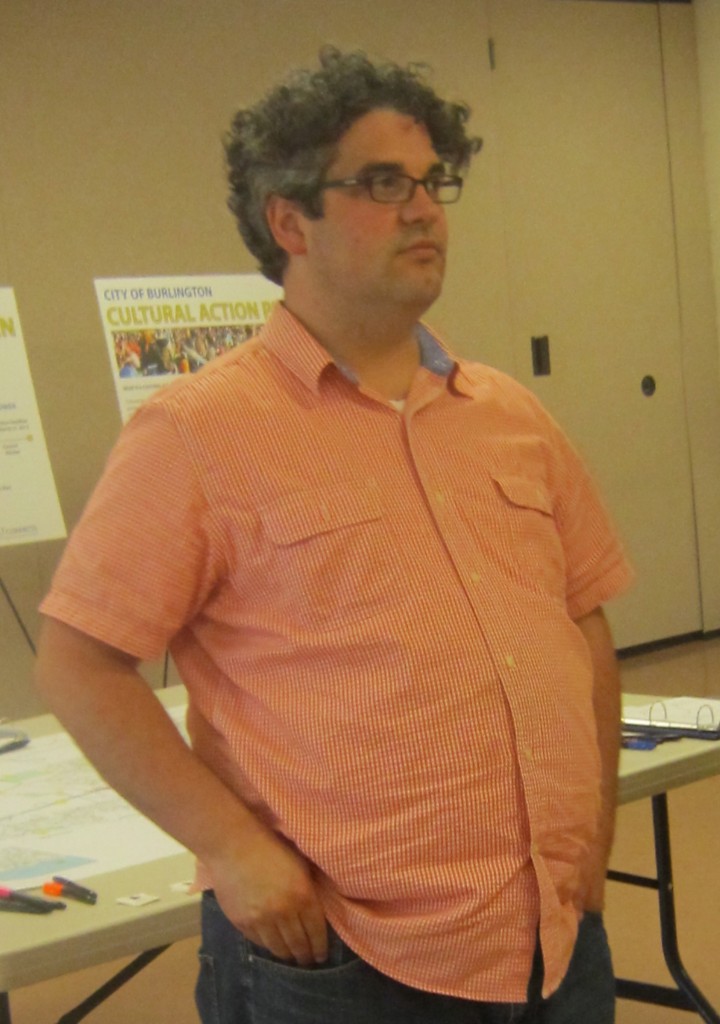
Jeremy Freiburger - leading a committee with a mandate to come up with a Cultural Plan for the city.
The question that comes out of all this is – how does a city create a cultural plan if it doesn’t have a clear firm sense of what its history is or a civic administration that strives to support and maintain that history? There was a point when Burlington had hundreds of thousands of dollars to restore and find a home for the structure – but the city couldn’t get agreement on where it should be located and the federal/provincial and municipal funding that was in place to do this was lost – it got used to pave some streets instead.
Burlington was once one of the premier locations in the province for fruit farms – that land got turned into shopping malls. Burlington and Maple View malls were once orchards – now they are covered in asphalt and serve as parking lots. The Freeman Station was one of several stations where barrels of apples were loaded into freight trains. There was once a cannery operation at the edge of the lake. Not even a plaque there now to mark a very important part of the city’s history.
Jeremy Freiburger has his work cut out for him. The city is at least looking at how culture can be highlighted and the city turned into a tourist destination. The basic elements are there – all we have to do is bring them to the surface, polish them up and Burlington will be a place to visit and spend some money while they are here.
Is that what this is all about?
We will follow the development of this plan.














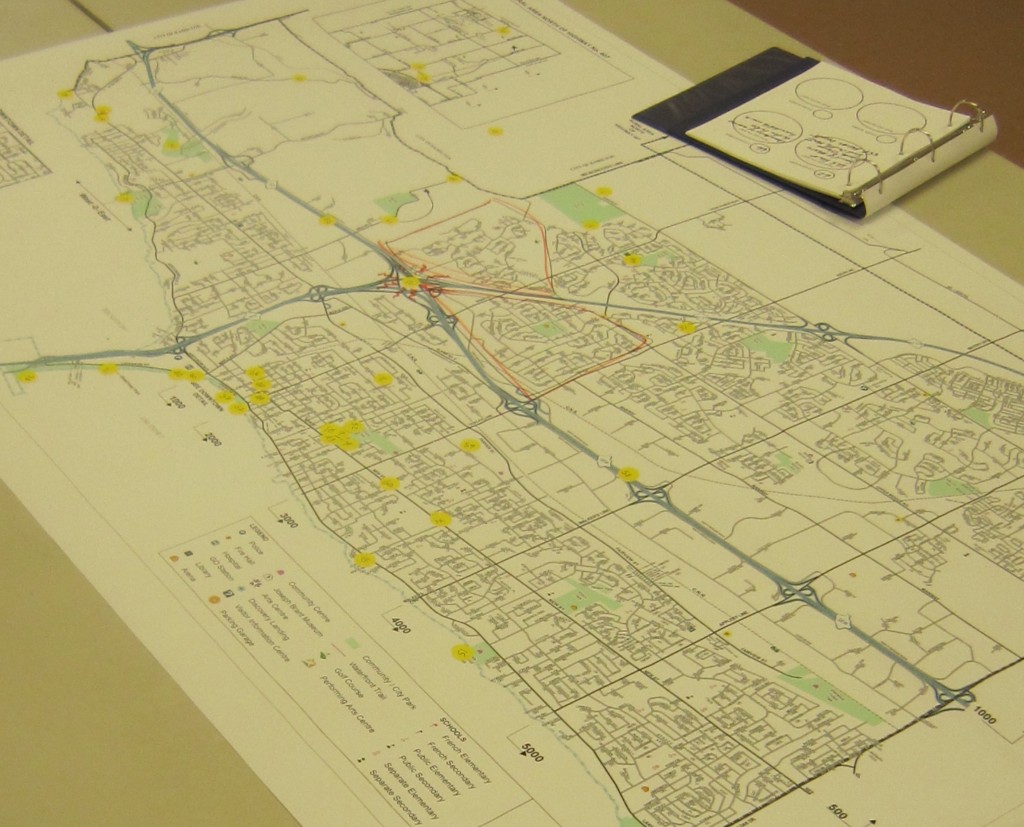
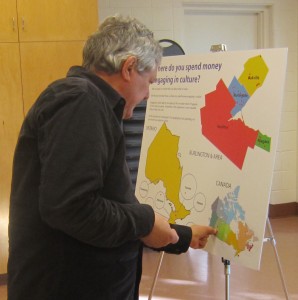






I find it kind of telling that asking citizens to provide input is something the government subcontracts. Chalk up another win for Shape Burlington!